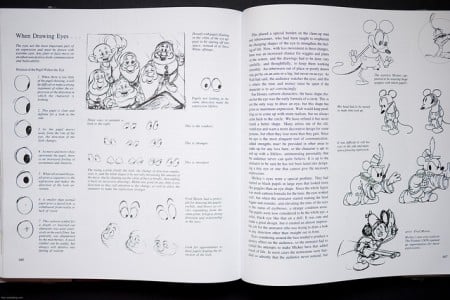
How many of you have ever watched an animated short, TV show, movie, or commercial? You may see different characters and different stories even by different companies but they all play by the same rules, or principles. The Illusion of Life: Disney Animation is a book offend referred to as the animator’s bible. It was written by Ollie Johnson and Frank Thomas, two of Walt’s 9 Old Men, more on them at a later date.
Don’t worry about trying to understand all the details from the short description, the video below will help you see what the principles do. There is no master order of the principles, so they follow as:
1- Squash and Stretch ~ This gives weight and flexibility to the object.
2- Anticipation~ For example humans bend their knees before we jump or we wind up for a pitch
3- Straight Ahead Action and Pose to Pose ~ Straight Ahead means an animator draws one frame after another in chronological order. Pose to Pose is when an animator draws the major poses and then fills in the rest
4- Staging ~ Animators but the important person, place or thing in the foreground center of the screen.
5- Follow Through~ When you swing a bat you don’t instantly stop when the bat hits the ball, you follow through. In audio-animatronics this is called compliance.
6- Slow in and Slow out ~ Things begin and end moving slowly. For example when a person runs they start out slowly and build up stream and they slow down as they are done running.
7- Arcs and Straight ~ Arcs show fluid motion where straight is for more mechanical type movement. For example the human body uses arcs (and circles) in shoulders, think swinging your arms.
8- Secondary Action ~ A secondary action that occurs alongside the primary action. For example swinging your arms while you walk.
9- Timing ~ This shows the laws of physics.
10- Exaggeration ~ If animation mirrored life exactly it would get dull. For example, a character eyes bulging out of their head.
11- Solid Drawing ~This shows a 3 dimensional space.
12- Appeal ~A viewer must feel the character is real. For example Mickey Mouse is the universal character of happiness.
Now for your homework, go find your favorite movie/short/commercial/TV show and see how many principles you can find.
—
Dianna Standen
- Discovery Island and River Country - February 5, 2014
- Just a Bunch of Hocus Pocus….. - October 11, 2013
- My Hollywood Studios (stress on the ‘my’) - September 27, 2013




